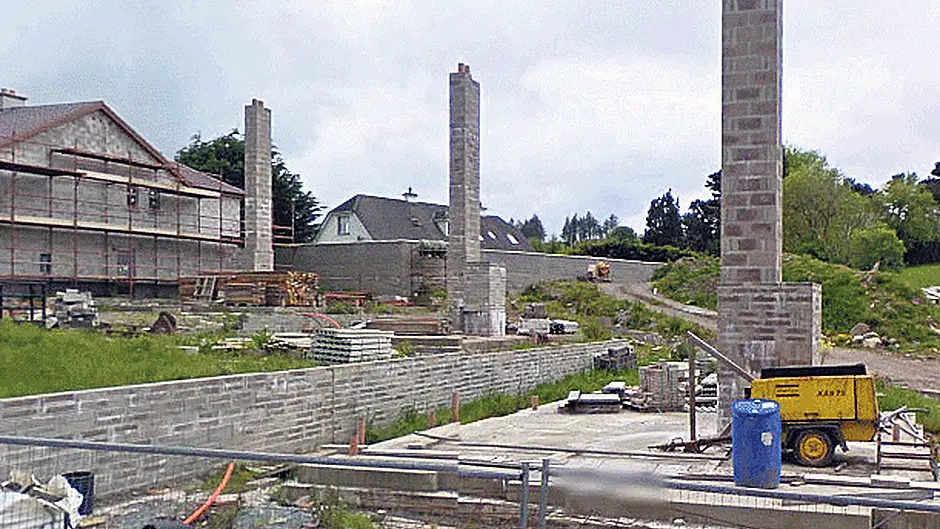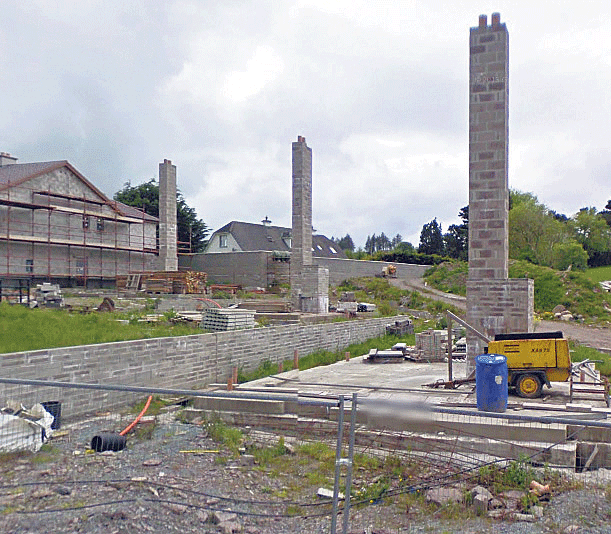Macroom, Bandon, Kinsale, Carrigaline and Innishannon are among the worst blackspots in West Cork for unfinished or 'ghost' estates, according to the Housing Agency.
MACROOM, Bandon, Kinsale, Carrigaline and Innishannon are among the worst blackspots in West Cork for unfinished or ‘ghost’ estates, according to the Housing Agency.
A survey released by the agency, which works alongside the Department of Environment, shows that Macroom has a total of 10 unfinished housing estates, while Bandon has four, and Innishannon has three, as have Kinsale and Carrigaline each.
The figures are revealed in the 2014 National Housing Survey which undertook a major examination of the estates left unfinished when the property market collapsed.
Among the findings of the nationwide survey were that some estates had no houses occupied, others had a small number and a few even had just one of several houses now occupied.
In Drimoleague, for example, the Altan estate on Church Hill has, according to the survey, just one house out of 28 occupied.
It’s a similar situation in Drakes Point in Crosshaven where just one house out of 233 is occupied, according to the survey, which was conducted in the second half of 2014.
There are several estates with no, or few, homes occupied, including The Granary in Macroom, Convent Gardens in Kinsale, and The Tannery in Bandon.
In Rosewood Manor in Innishannon, there are just two out of 15 houses occupied, and just one out of 12 at Downeen Road in Rosscarbery.
Four out of 55 houses in Schull’s Copper Point estate are occupied, and none of the 12 homes in Enniskeane’s Inis Orga estate were occupied at the time of the survey.
However, there are some estates with higher occupancy, like the Castle Heights estate in Dunmanway where five out of five houses are now occupied, and 19 out of the 28 homes at The Lawn, Mountmassey in Macroom are now lived in.
There is full occupancy at Fernhill Drive in Clonakilty, where all 16 homes are now occupied, and 206 of the 310 homes at Carrigaline’s Castle Heights are occupied. But estates like Cois Atha in Skibbereen are still struggling to be filled, with just two out of nine homes here occupied by end 2014, and just six of the 54 homes in the Chapel Court estate in the same town are occupied.
No homes are occupied in Bandon’s 30-home Coolfadda estate, and it’s a similar story at the 24-home Carraig Naofa estate in Durrus. In Ballylickey, none of the eight detached homes at Reendessert were occupied at the time of the survey, but the estate is currently being developed, under a planning permission.
Housing Minister Paudie Coffey said that the Special Resolution Fund, under which €6.75m had been drawn down by local authorities, will continue this year, with €3.35m allocated to it.
‘My objective for 2015 is to secure the resolution of as many more developments as possible and I assure you that I will not spare any of my energy in making that aspiration a reality,’ he added.
The full list of estates, and the status of each house, is contained in the report which is now available on the Department’s website, in the ‘Our Services’ section of www.housing.ie
Meanwhile, the beginning of 2015 has seen growth in the building sector in Cork remain sluggish, with the latest edition of the National Housing Construction Index revealing an increase in planning applications in 18 counties, but commencements falling dramatically.
In Cork, planning applications have risen by 15%, when compared to the same period in 2014, but building ‘starts’ have fallen by 69%.
Nationally, commencements are down 62% in the first two months of 2015, with every county recording a decrease, despite applications being up 9%.
The latest edition of the National Housing Construction Index tracks every project from January through to February 2015, and compares it with the same period in 2014.
According to Danny O’Shea managing director of Link2Plans: ‘Commencements are down in every county when compared to the same period last year with an overall national decrease of 62%. However, 2014 was an exceptional year due to regulatory changes. The introduction of changes to the building regulations in March 2014 caused an unprecedented surge in commencements which was akin to a one-off stimulus boost.’
In fact, commencements for the first two months of the 2015 are up over 3% on the same period in 2013, which probably gives a more accurate picture of the steady but slow growth in the sector,’ he added.
As building applicants rushed to lodge their commencements before the changes to the building regulations came into force on March 1st last year, it created an anomaly in the market with an increase in commencements of 132% for the first quarter of 2014.
‘These were exceptional gains and ones which we don’t anticipate will be repeated in the medium term,’ said Danny O’Shea.
‘The fall in project commencements nationally reflects the situation in Cork, which also saw commencements fall sharply.
Nationally, the number of project commencements fell by 1,117 from 1,816 to 699 when compared with the same period in 2014,’ he added.








